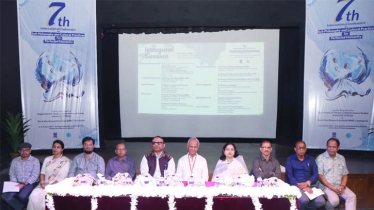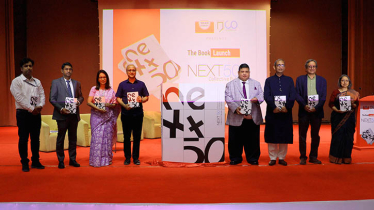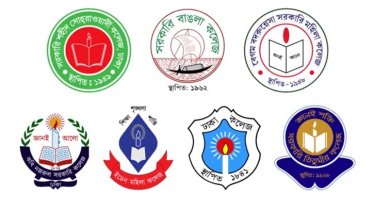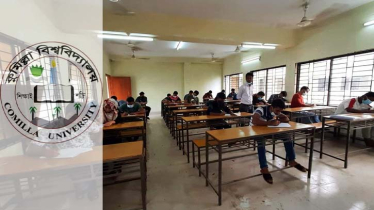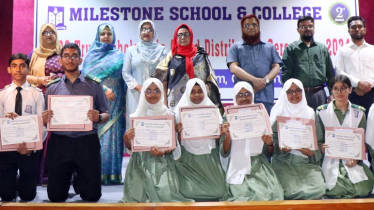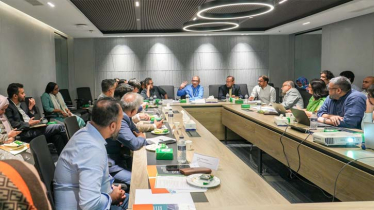
Photo: Courtesy
CHIP WAR a highly praised book written by Chris Miller who teaches International history at Tuft University's Fletcher School, USA is a "New York Times Bestseller". I was waiting anxiously to read the book but couldn't quite get my hands on it until my eldest son who is an electrical engineer at Intel in Oregon sent me the book. It is a large book of more than four hundred pages and divided into eight headings with a conclusion at the end. The book also provides a glossary of the various scientific terms used and a huge list of references at the end.
The small chip or semiconductor that houses billions of transistors in a space smaller than a square inch of the silicon wafer is a fascinating technological brilliance. The chip is believed to be the "new oil" and now the most critical technology in existence. From spacecraft, cruise & precision-guided missiles to computers, mobile phones, cars, microwave ovens and washing machines all rely on the chip to function. Miller's extensively researched book paints a canvas of more than fifty years of semiconductor invention, its development over the years and the race by different stakeholders like Intel (USA), Taiwan's Semiconductor Manufacturing Company (TSMC), SAMSUNG (Korea) and Semiconductor Manufacturing International Corporation (SMIC) China, to dominate the highly lucrative and advanced semiconductor landscape. The dropping of the Atomic Bomb on Hiroshima and Nagasaki, Japan towards the end of WW11 ushered in the Atomic Age and brought forth the awesome power of nuclear energy and thus transformed the world of coal and steel.
The engaging narrative in CHIP WAR begins with the workings of a semiconductor and its invention by scientific geniuses and Nobel Prize winners like Walter Houser Brattain, John Bardeen and William Bradford Shockley. Subsequently, the revolution created by the invention of the Integrated Circuit (IC) by Robert Noyce and Jack Kilby that transformed the whole semiconductor scenario is a very interesting reading. The rise of Silicon Valley and the collaboration with Stanford University academics, in California, helped establish some tech firms like Fairchild Semiconductors, Qualcomm, AMD, Nvidia and others. The world's most brilliant minds at the time were all drawn to California, Texas and Massachusetts to work in the various semiconductors industries located there. Physicists and engineers like Gordon Moore and Caltech Professor Carver Meade envisaged a changing scenario very soon where miniaturizing transistors would play a significant role. National Aeronautics and Space Administration (NASA) and the USA Defense establishment's requirements provided almost unlimited funds for research to improve the chip's performance and utility in these facilities.
Meanwhile, Gordon Moore, (of the famous Moore's Law: The number of transistors in an Integrated Circuit (IC) doubles every two years), and Robert Noyce (often known as the Mayor of Silicon Valley) established Intel (1968) and was producing the most advanced chips in the USA at the time. The mind-boggling and staggering complexity involved in making chips forced many firms to focus their attention on chip architecture rather than establish highly expensive manufacturing laboratories or foundries. These firms often outsourced their manufacturing to TSMC and SAMSUNG. The making of a chip may involve hundreds of operations and months of painstaking work. Intel, however, had their own research, manufacturing and fabrication facilities known as fabs.
Morris Chang who studied at Harvard, MIT and Stanford is an American-Taiwanese electric engineer. He worked at Texas Instruments and General Instrument Corporation, USA until the Taiwan Government recruited him. He is credited with building TSMC and making it one of the leading chip-manufacturing foundries in the world. He founded TSMC in 1987. By 1960 China had also established its first semiconductor research institute in Beijing. Five years later they had produced their first Integrated Circuit (IC) that Bob Noyce and Jack Kilby did about five years earlier. However, at about the same time TSMC was founded, Ren Zhengfei established Huawei as one of China's leading electronic industries.
The miniaturization of transistors, lead many to believe that Moore's law was dead. However, Jim Keller's pioneering work on chips at Apple, Tesla, AMD and Intel changed all that. Keller believes fifty times more in the density of transistors is achievable. That can be made possible in tube-shaped transistors called "gate-all-around". The laws of physics, like the quantum effects, will however, make it impossible to shrink transistors further. Interestingly the most advanced photolithographic machines essential in the manufacture of state-of-the-art chips in the Extreme Ultra Violet (EUV) radiation (wavelength about 10-20 nanometer) range are only made in the Netherlands by the Advanced Semiconductor Materials Lithography (ASML) Company. A single photolithographic machine can cost anything up to $200 million or more. Components for EUV machines are procured from the USA, Germany and Japan.
Startup companies, nowadays design chips optimized for specific applications. Big tech firms like Google, Amazon, Microsoft, Apple, Facebook, Nvidia, Alibaba and many others are investing heavily in research to design their own chips for specific purposes like for instant - Artificial Intelligence (AI). It is estimated China spends more money importing chips than oil. It is now investing heavily both in research and manufacturing to be self sufficient in chip production.
CHIP WAR recounts the fascinating story of how the chip was invented by scientific geniuses, its development by pioneers in the Silicon Valley and how it came to dominate our everyday life and now also playing a pivotal role in all defense establishments.
Messenger/Sajib


